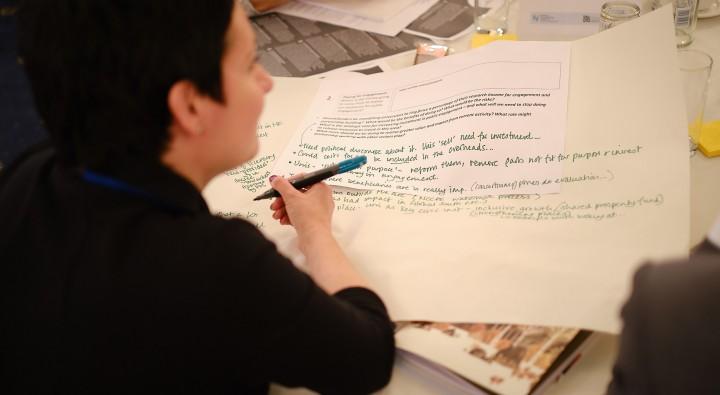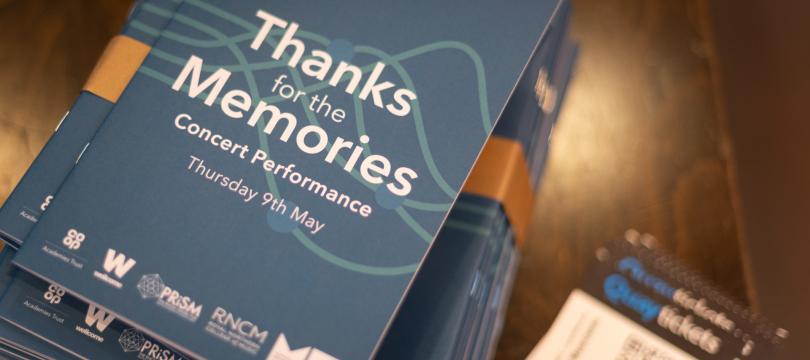How to share your engagement expertise with researchers

14 / 06 / 2019
Heather Doran is the Public Engagement Manager at the Leverhulme Research Centre for Forensic Science, University of Dundee. Here she explains how she has developed new tools and resources to help colleagues define and understand public engagement.
The definition of public engagement that was carefully constructed by the NCCPE has been adopted and shared widely. When it comes to applying this broad definition to specific activities though, it can be tricky to decide what is, and what isn’t public engagement.
"Public engagement describes the myriad of ways in which the activity and benefits of higher education and research can be shared with the public. Engagement is by definition a two-way process, involving interaction and listening, with the goal of generating mutual benefit."
The NCCPE’s definition of public engagement
As I was leading a workshop with the Leverhulme Research Centre for Forensic Science about our approaches to public engagement, I covered this definition, how we are adopting it and how I can support everyone in the team to embed engagement in their research. Towards the end of the session one member of the team asked, “How do we know what is and what isn’t public engagement and when to ask you for support?”
I realised, at that point, as someone who has worked in public engagement for seven plus years I hold a lot of this information in my head. I know the process I take to make decisions about what might be public engagement and what isn’t public engagement.
Decision trees
I spent many years as part of a public engagement team where we held discussions to figure out what fell within the definition of public engagement. However, researchers might need to make the decision themselves about when they should seek support, where that support might come from and how they report it.
So, as a follow up to the workshop session, I created a chart that mapped how I decide what might be, and what probably isn’t, public engagement. A decision tree to help decide whether or not an activity, meeting, gathering or anything else might be public engagement, which I then shared with the team at the Leverhulme Research Centre.
Accessible language
This exercise also made me think more about the language we use in public engagement and how we share our expertise. As the field has developed and been refined, more of us have become Public Engagement Professionals and we have introduced our own jargon to enable us to communicate effectively. But (as we all should know) we need to make sure that when we discuss public engagement with others we use language that is accessible to generate meaningful and useful conversation.
I had already created a document outlining common terms used across public engagement for my workshop. I can flip relatively easily between using the terms Public Engagement, Science Communication, Outreach, Responsible Research & Innovation and Citizen Science but I know these can have very different meanings to different people. It’s important for us, within an interdisciplinary research centre, that everyone understands each other. I try to make sure that I am as clear as possible when working with the team.
I did get stuck when it came to picking apart the similarities and differences between Participatory Research and Citizen Science but I knew there would be people out there to help me, so I asked on Twitter. Thank you to Professor Muki Haklay at UCL who responded with a link to a paper that clarified the definitions for me and highlighted to me even more how important it is to make sure everyone is working to the same definitions as, ‘…terminology impacts on how knowledge is developed’ (Eitzelet al. 2017, Citizen Science Terminology Matters: Exploring Key Terms).
Available and useable by all
Recently I shared my resources with the Public Engagement Network Jiscmail list, in answer to a call out for resources. I realised that we need to make further efforts to practice what we might preach to researchers - to make our resources available and useable by all, not just those within the public engagement sphere. As we generate our knowledge, language and tools within our public engagement work we should also make sure that this knowledge isn’t only shared within our networks.
Through support from the Library Research Services team responsible for Discovery (the University's digital repository), my resources have been uploaded to the Discovery Research Portal and assigned a DOI, which makes them searchable, free and available for anyone to download and use.
Discovery uses Pure software, and I am not writing this in universal support of this method as the only and best way to share all public engagement resources. However it might be a starting point, and one of the places where this information can sit -along with publications like Research for All and on blogs and other sharing platforms.
As an extra bonus, the number of downloads and shares of these resources are captured and this can also be used to help me as a Public Engagement Professional build a story which outlines my contributions to public engagement.
What next?
I’ve solidified in my mind that an extremely important part of being a Public Engagement Professional is that I must:
- Define any terminology that I use;
- Ensure any tools or guides that I produce are available to others.
How else might we as public engagement professionals ensure that we adopt the practices that we support researchers to do?
What platforms or spaces might be the ones we could adopt to share our resources?
How can we check ourselves when we use terminology that might not be clear or might be misinterpreted?
Let me know what you think in the comments below or contact me via h.doran@dundee.ac.uk.

